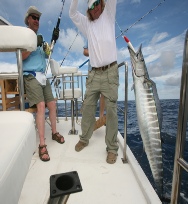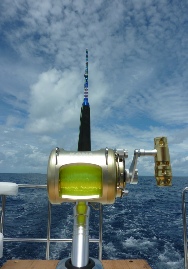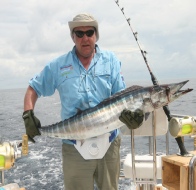© 2014 Gary Smith Fishing Ltd All Rights Reserved










Proudly Associated With


The fixed spool reel is without doubt the most popular reel used in the modern world. It is used in all areas of fishing apart from fly fishing. The main principle of the fixed spool reel is as its name suggests the spool is fixed in position therefore it does not revolve. The line is wound onto the spool by a rotating bail arm driven by a handle and gears. The only way the spool can be allowed to rotate is by an adjustable slipping clutch mechanism when under tension. The fixed spool reels of the 21st century are very sophisticated; they are designed and constructed using state of the art materials and technology. The lightness and balance of the reel needs to match the latest carbon and carbon / titanium mix rods they can be fitted to. Many of the best fixed spool reels available are now made of aluminium which is very light and very strong resulting in near perfect balance. The rotation of the bail arm, when retrieving line, turns the line at a 90 degree angle. This together with the power roller bearing ensures the line feeds onto the spool perfectly evenly so on the next cast the line will fall away perfectly once the bail arm is opened. A slight turn of the handle after casting and the bail arm will shut in readiness for the next retrieve.
The drag system or slipping clutch mechanism is either adjustable on the front of the reel. This is known as a front drag system, or the rear where it is referred to as a rear drag. If a fish needs to take line the clutch can be adjusted accordingly allowing the fish to take line under resistance rather than break the line, as the fish tires the clutch can be tightened and reeled in. The need to maintain your reel is very important and it is absolutely essential that after use you wash the reel and spool off under luke warm tap water before drying off with a clean cloth and storing. Special reel oil can be purchased and this should be applied to several parts after cleaning. The most important part is the bail arm power roller which turns the line on retrieval. This roller is put under extreme pressure and it is essential it rotates freely otherwise line breakage will occur. Test the roller regularly by cutting a piece of thick line and pull it back and forth over the roller making it rotate, if it does not move freely oil it immediately or have it checked by your tackle dealer. Also regularly remove the spool and lightly oil the spool drive shaft - just a drop will do. Wipe all excess away because oil on the line may put fish off coming near your bait. Give the handle joint a drop also as these usually fold either by slackening a knurled retaining knob or pressing a button which enables easier storage.
This all may sound as though it will be a little too much bother after a long fishing trip. Look at it this way, why spend good money on a sophisticated piece of equipment like this and just let it decay for the sake of five minutes? When you fish at night just watch the saltwater spray coming off the line on retrieval in the beam of your headlight……..enough said. If you are using a large distance casting reel with very thin line and a coned spool, you will probably change spools frequently whilst fishing. The coned spool enables line to come off the spool on casting at high speed as the weight takes it out to sea. Whilst changing spools take care not to get sand underneath the spool and subsequently on the shaft drive - easy to do especially at night. Always check all spare spools for grains of sand on the inside as they can do a lot of damage. When loading line onto your reel spool always check the markings on the spool. These indicate how much line and of what thickness can be loaded onto the spool so you gain the most effective use from your reel.
The drag system or slipping clutch mechanism is either adjustable on the front of the reel. This is known as a front drag system, or the rear where it is referred to as a rear drag. If a fish needs to take line the clutch can be adjusted accordingly allowing the fish to take line under resistance rather than break the line, as the fish tires the clutch can be tightened and reeled in. The need to maintain your reel is very important and it is absolutely essential that after use you wash the reel and spool off under luke warm tap water before drying off with a clean cloth and storing. Special reel oil can be purchased and this should be applied to several parts after cleaning. The most important part is the bail arm power roller which turns the line on retrieval. This roller is put under extreme pressure and it is essential it rotates freely otherwise line breakage will occur. Test the roller regularly by cutting a piece of thick line and pull it back and forth over the roller making it rotate, if it does not move freely oil it immediately or have it checked by your tackle dealer. Also regularly remove the spool and lightly oil the spool drive shaft - just a drop will do. Wipe all excess away because oil on the line may put fish off coming near your bait. Give the handle joint a drop also as these usually fold either by slackening a knurled retaining knob or pressing a button which enables easier storage.
This all may sound as though it will be a little too much bother after a long fishing trip. Look at it this way, why spend good money on a sophisticated piece of equipment like this and just let it decay for the sake of five minutes? When you fish at night just watch the saltwater spray coming off the line on retrieval in the beam of your headlight……..enough said. If you are using a large distance casting reel with very thin line and a coned spool, you will probably change spools frequently whilst fishing. The coned spool enables line to come off the spool on casting at high speed as the weight takes it out to sea. Whilst changing spools take care not to get sand underneath the spool and subsequently on the shaft drive - easy to do especially at night. Always check all spare spools for grains of sand on the inside as they can do a lot of damage. When loading line onto your reel spool always check the markings on the spool. These indicate how much line and of what thickness can be loaded onto the spool so you gain the most effective use from your reel.
Copyright © Gary Smith & Luigi Mateos
Back
| Address |
| Contact Us |
